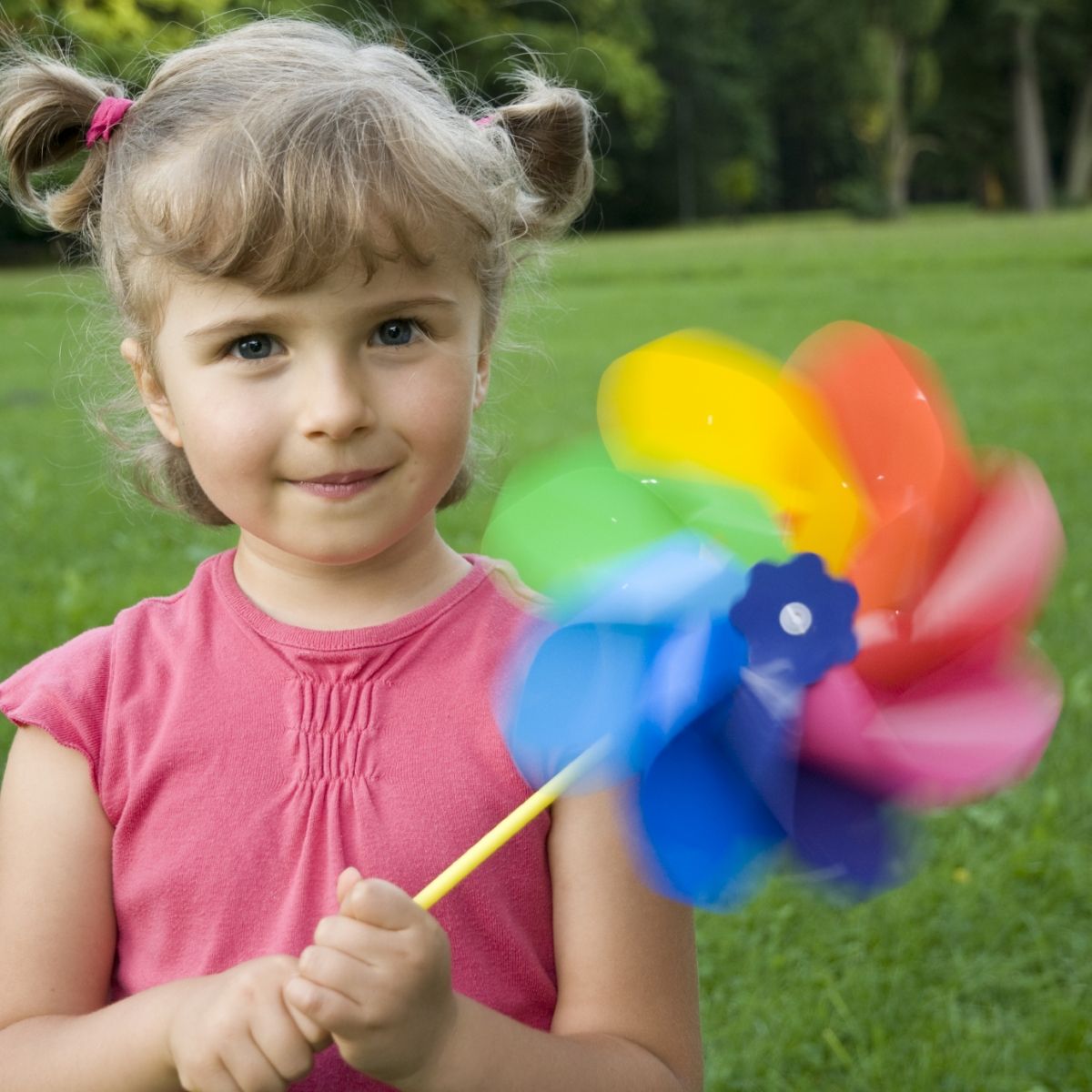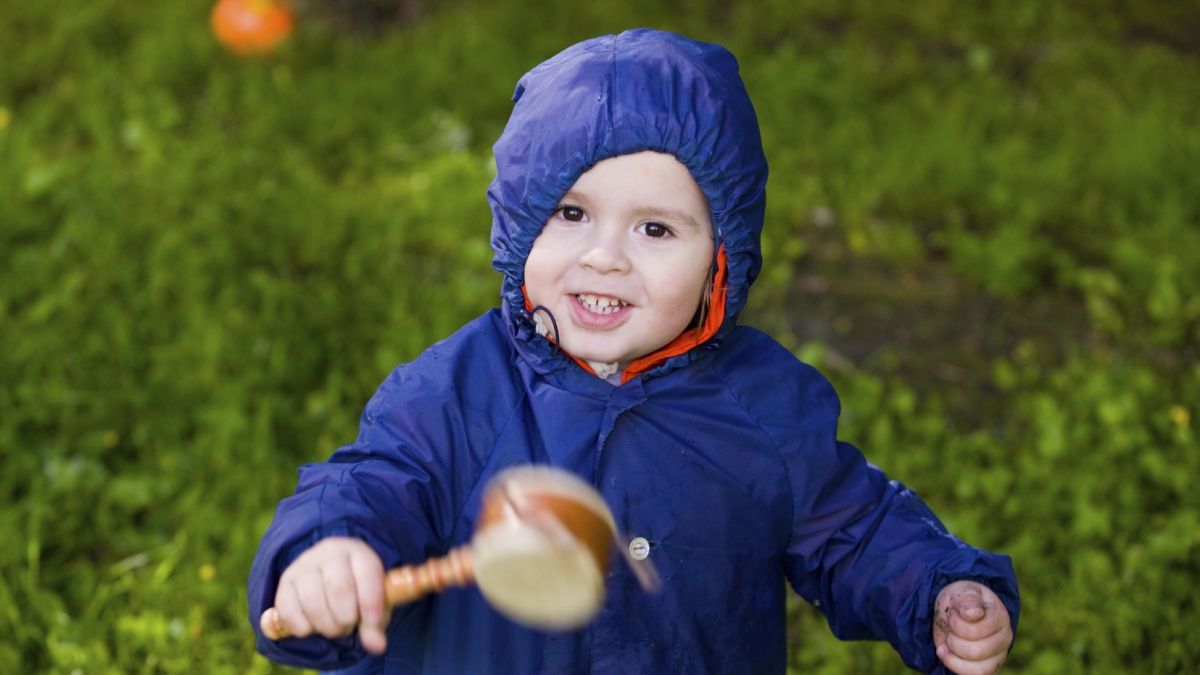
Spring has sprung. Warm breezes are starting to blow. The sun is higher in the sky. Gardens are in bloom. Spring rains help them grow. You can practically feel the energy in the air, and that can lead to some wonderful outdoor STEM (Science, Technology, Engineering and Mathematics) exploration.
In my work, I focus on how to use the amazing concept of energy to get young children outside exploring, asking questions, and investigating the world around them. I’d like to share some of my tips and tricks for engaging children in energy exploration.
What is Energy?

Even for some adults, the concept of “energy” can seem like a highly complex topic that’s difficult to understand, much less explain to a young child. How do you explain how electricity moves along wires, or how cell phones are capable of sending messages wirelessly? But at its most fundamental, energy is simply the ability to do work.
If you’re talking with children, you can ask them, “What is work?”, “Is it work to clean your room or walk up a hill?”, “What are examples of work being done?”, “What makes things work?” You can explain that energy does work. Energy helps things move and live. Energy is all around us. Can the children see any energy doing work around them? They might notice lights shining, children running, etc.
If you want to see and experience energy, the very best place to go is right outside the door. In the outdoors, energy experiences abound. Plants growing require the sun’s energy. Wind blowing is evidence of the energy of molecules in motion. Sun shining delivers heat and electromagnetic energy. Water moving down a hill is gravitational energy in action. The birds singing is sound energy. Energy is everywhere!
The following are some of my favorite ways to introduce wind, solar, sound, and water energy with children outside.
Wind Energy
Did you know that wind energy is created from the energy of the sun? As the sun warms the Earth, it heats different surfaces differently. This causes air to move, and that moving air (wind) is a form of energy that can do work. It can blow children’s hair, rustle the leaves, and it can even turn giant windmills that turn that wind energy into electricity. (You can show children pictures of giant electricity-generating windmills that turn the energy from the wind into electricity we use in our homes, schools, and many other places.)

A simple way to help children explore the energy in the wind is to have them design flags with fabric or paper. Have them use markers and or other painting or coloring supplies to create their own designs. Then have them attach their flags to large sticks or dowels purchased from the hardware store. Can the children see the flags move? What kind of energy is doing the work to move the flags?
The children can also design kites, or use simple Dollar Store wind toys to investigate where the wind blows strongest. Or they can build their own wind toys. For example, strips of cut paper or fabric can be arranged to create wind streamers. Truly, the options are limitless. If you want to get more complex, the children could design little sailboats out of recycled bottles with sails made of paper and Popsicle sticks. They can place the boats in a large tub of water, river, stream, or lake to see if the wind will push them.
The simple intention of exploring the wind will open your eyes to the incredible possibilities.
Solar Energy
Isn’t it amazing that the sun is approximately 93 million miles away from earth and yet in one single day the earth receives enough solar energy to power every electric device on earth for an entire year? Did you know it takes the sun’s light 8 minutes to reach earth?
Children can explore the sun’s radiating energy in a variety of ways. A simple activity to show them the sun’s energy is to place a cup of ice water in 2 different locations, one sunny and one shady. Ask them what they hypothesize might happen to both cups. As they notice differences in how fast the ice melts, you can ask them why one melts faster than the other. More solar energy in the sunny spot will do more work to melt the ice faster.
If you really want to challenge the children, explore evaporation. Put a mark on the cup where the water is at the start and then check back the next day or week. What happens to the water? Or you could paint with water on a sunny sidewalk, on rocks, or on another hard, flat surface in a sunny spot. What happens to the water paintings? Evaporation is a fun way to observe the effects of solar energy in action.
Sound Energy

Have you ever wondered how sound travels? It moves by vibration in the air all around us. That is why there is no way of talking on the moon: There is no atmosphere, so there is no air to vibrate to make sound. Sound is vibrations; it is the transfer of energy. This gif demonstrates what sound waves look like.
When you go outside, you can listen to the birds or the sounds of the leaves swaying in the trees. Sound is energy. Every sound you hear is the transfer of energy through vibrations. If you have drums, go outside and play drums with the children. Hit a drum and watch the surface vibrate. You can see it better if you put some sand or rice or grains on top of the drum. If you don’t have drums, or even if you do, allow the children to use their drumsticks or other sticks to gently tap on the natural world around them, exploring the energy of sound.
Water Energy
Moving water has energy—lots of energy. Gravity is what makes water move. Experiment with gravity to help connect the idea that water moves because of gravity. What makes the rain fall? Gravity. Why does water flow down a hill? Gravity.
The energy in moving water might be the most fun of all energy types. Kids love water. Water can help us see energy very clearly. When an object disturbs a placid puddle, lake, or pool of water, it will create ripples. Just like sound energy, ripples are the movement of energy through water. You can toss stones into water and as you watch the ripples move and dance across the surface, you have an opportunity to talk about motion and energy. Even more fun: spend a rainy day jumping in puddles to explore ripples in water. Another great outdoor activity can be to have students design water wheels. This lab can help you get started.
Energy is everywhere. If you want to learn more, check out my good friends at the National Energy Education Development Project for free resources for primary school educators. Here you will find songs, games, hands-on activities, investigations, and much more.
About the Author
Joshua Sneideman is an Albert Einstein Distinguished Educator and author of two books with hands on activities for kids: Renewable Energy: Discover the Fuel of the Future and Climate Change: Discover how it Impacts Spaceship Earth. He can be reached for speaking or professional development on STEM in early grades at [email protected].